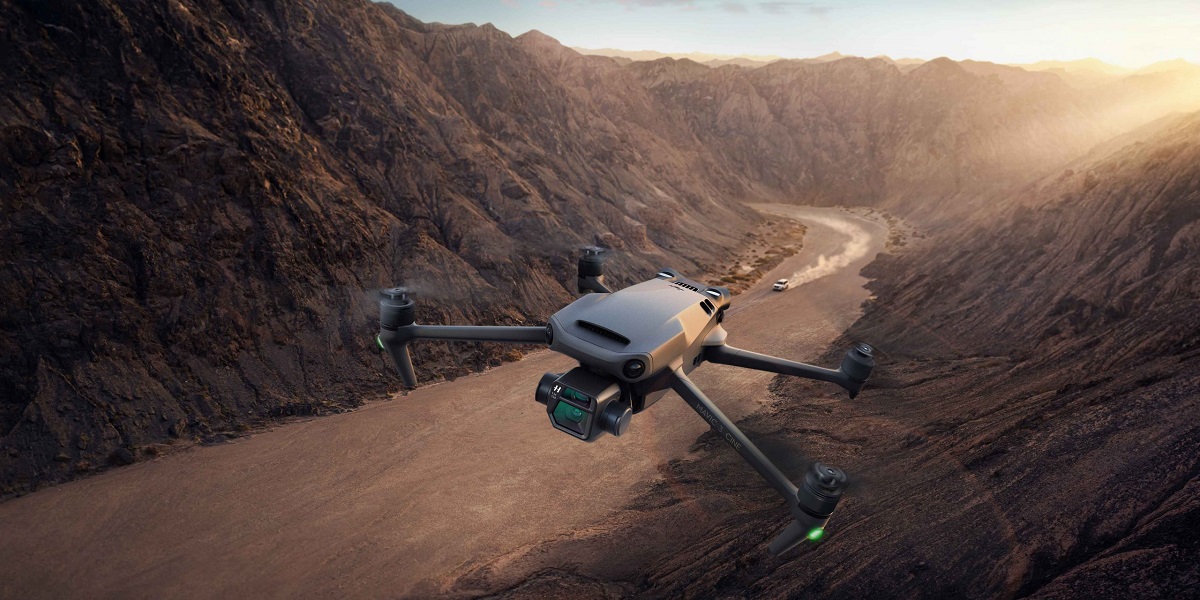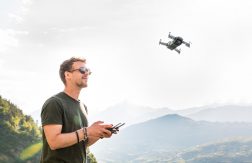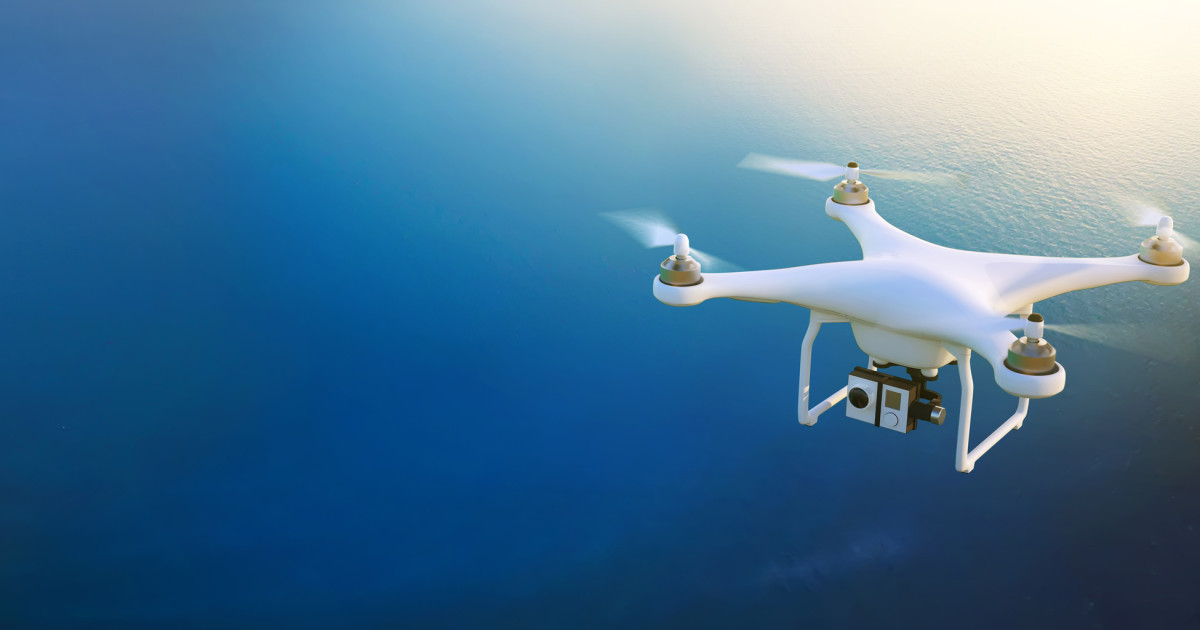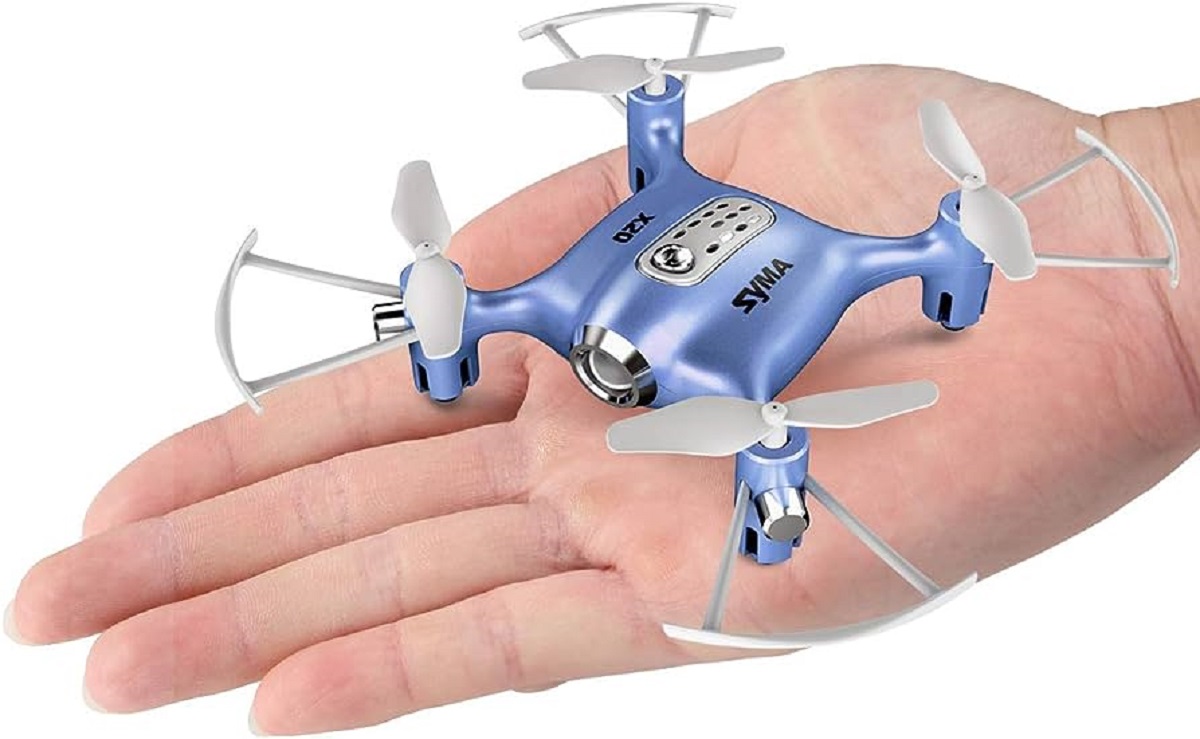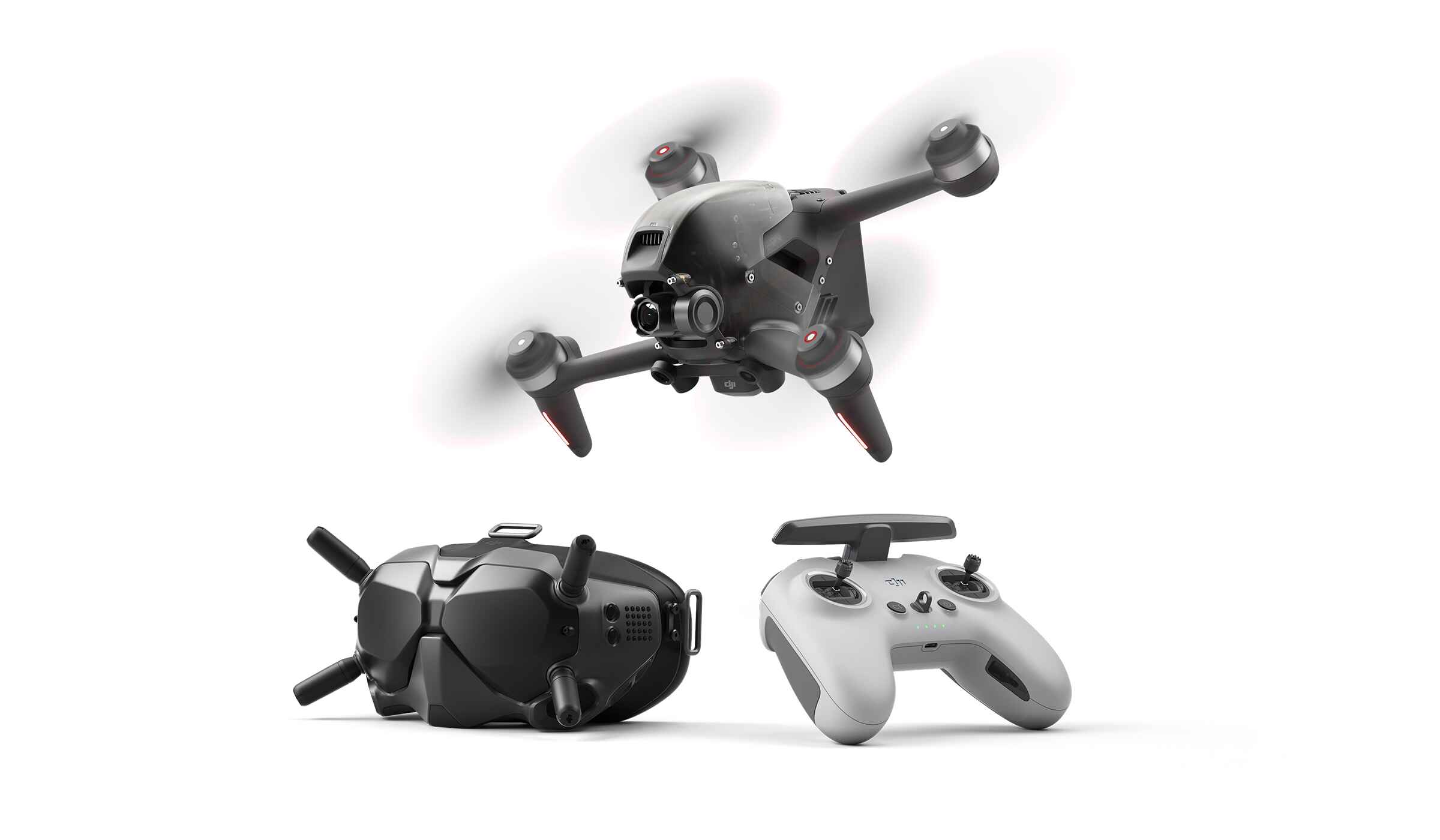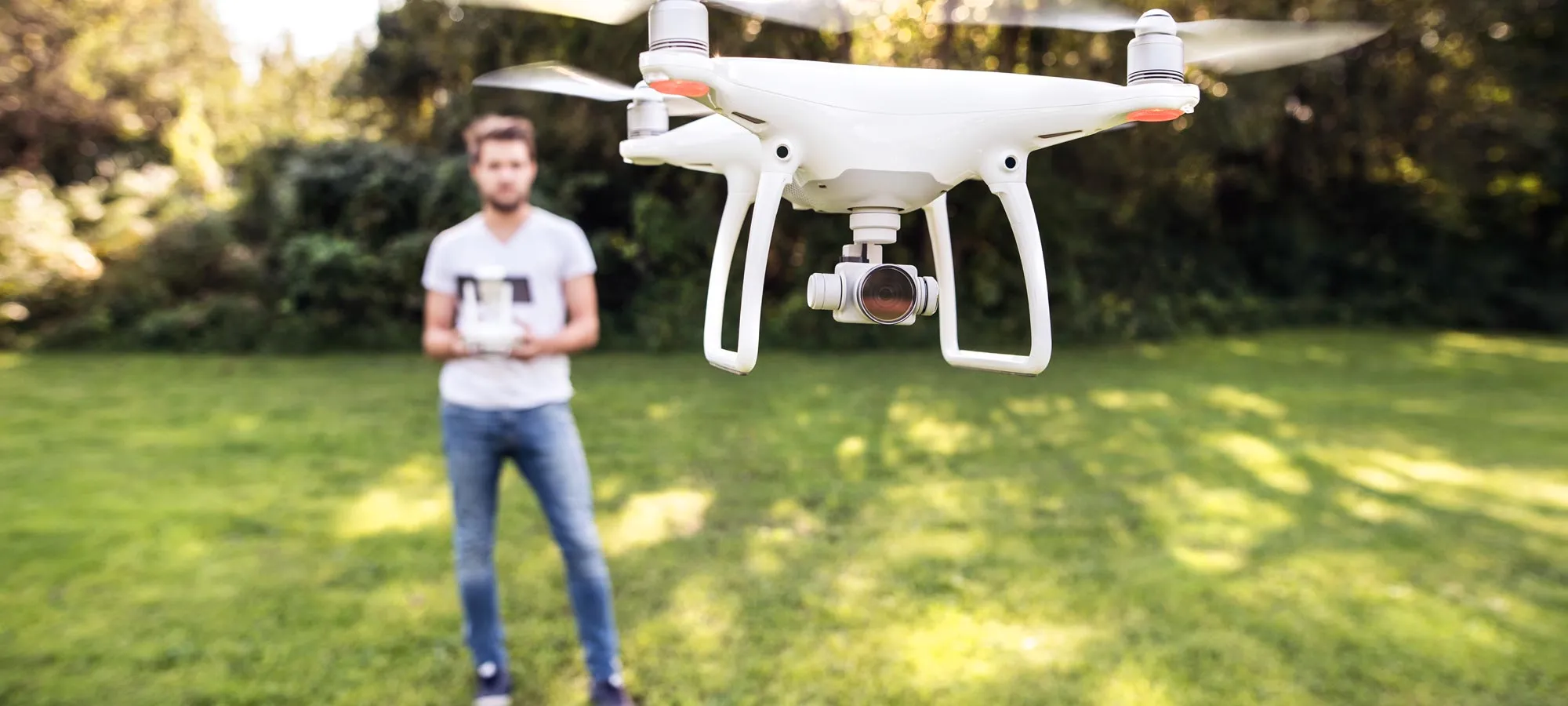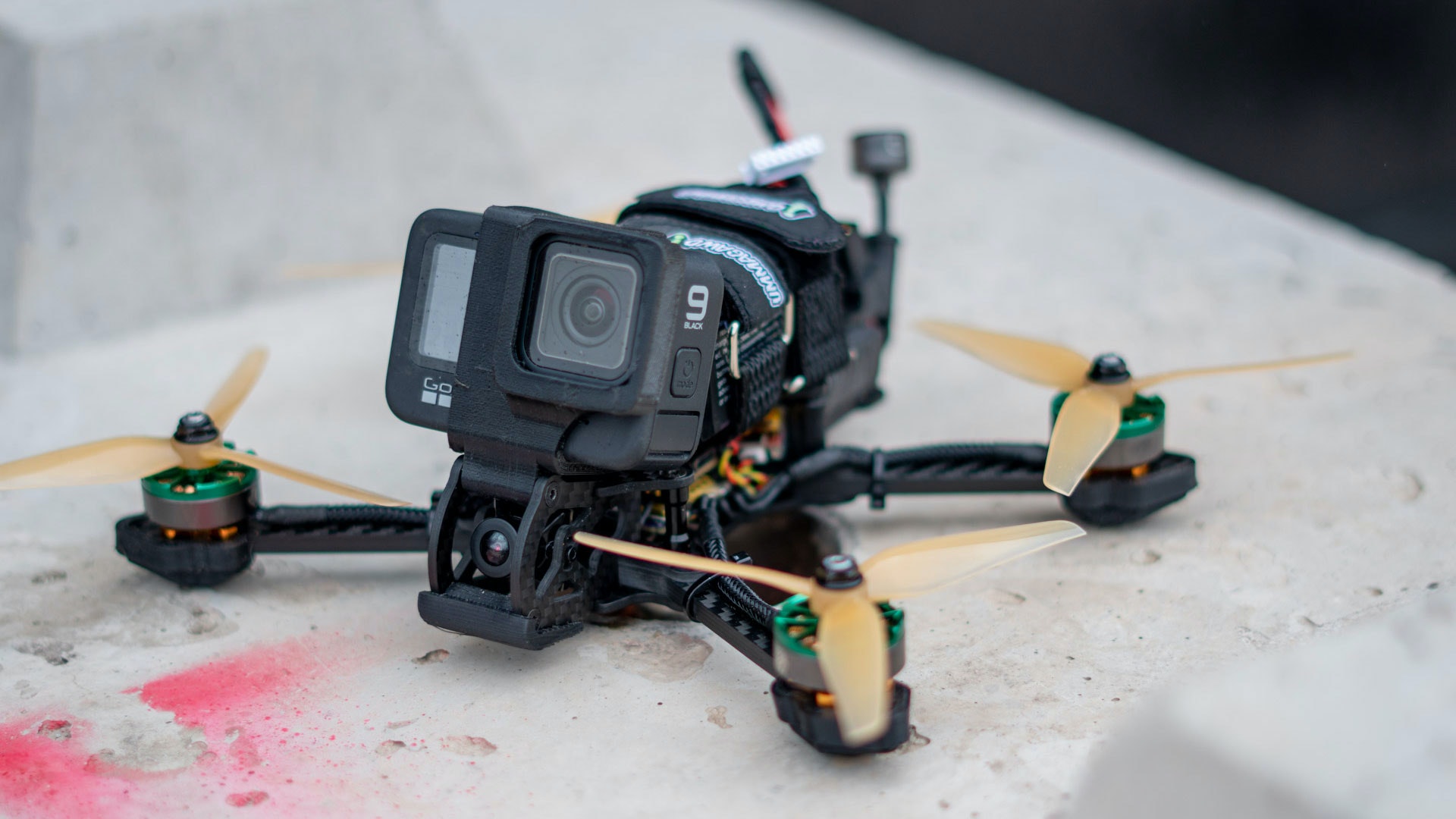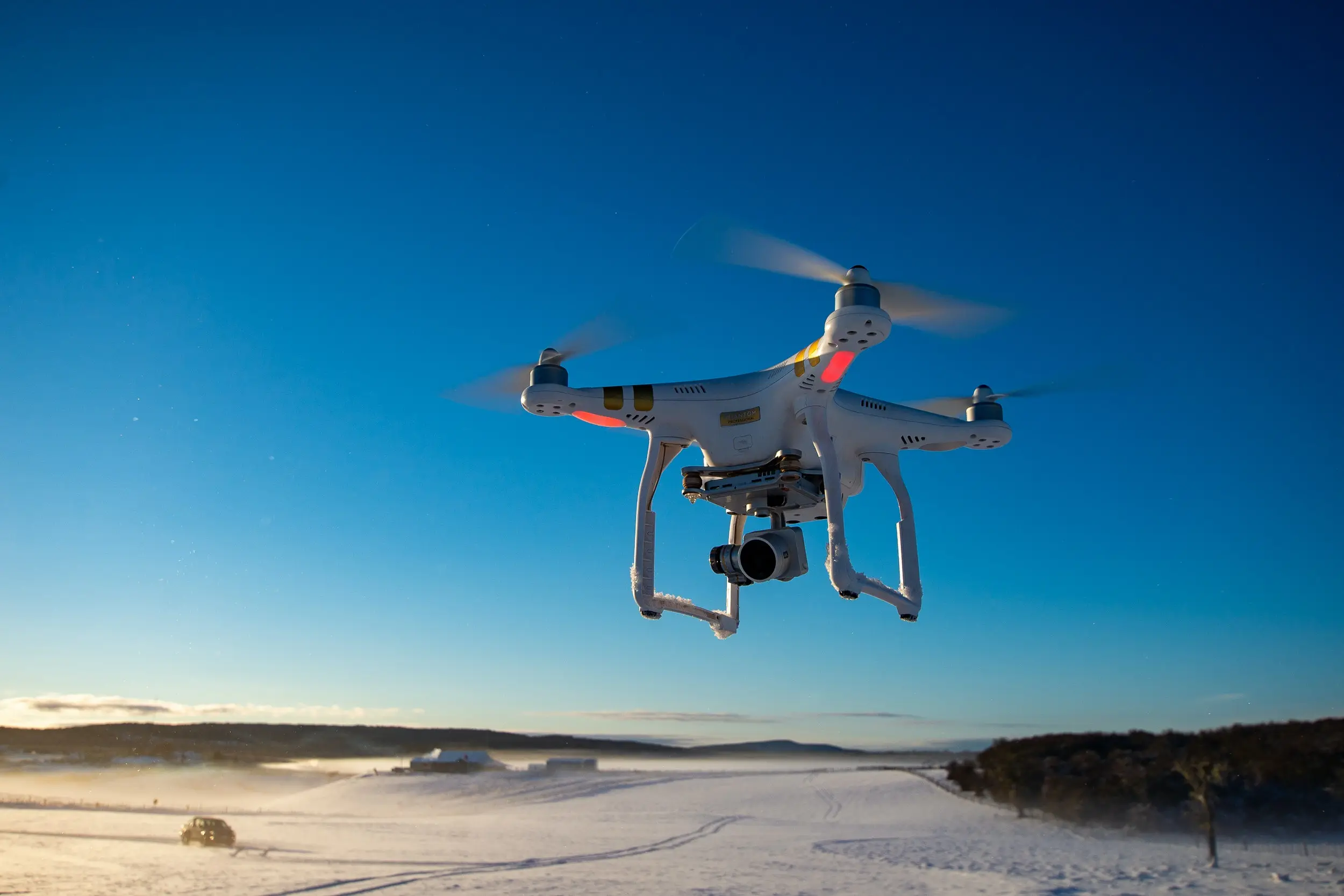Introduction
Whether you’re an aspiring pilot or simply have a passion for technology and aerial photography, learning to fly a drone can be an exciting and rewarding endeavor. Drones, also known as unmanned aerial vehicles (UAVs), have gained immense popularity in recent years for their diverse applications and accessibility to enthusiasts of all levels.
Before embarking on your drone piloting journey, it’s important to understand the basics. Familiarizing yourself with the terminology, regulations, and safety precautions will set the foundation for a successful and enjoyable flying experience.
In this comprehensive guide, we will walk you through the steps to becoming a skilled drone pilot. From choosing the right drone to mastering flight maneuvers and understanding advanced features, we’ve got you covered.
So, whether you’re dreaming of capturing stunning aerial shots or simply want to unleash your inner drone pilot, let’s dive into the world of drone flying and unlock the skies!
Understanding the Basics
Before you take to the skies with your new drone, it’s essential to have a solid understanding of the basics. Let’s start with some key concepts:
- Drone Terminology: Familiarize yourself with key drone terms such as UAV, quadcopter, remote controller, GPS, and FPV (First Person View). Understanding these terms will help you better navigate the world of drones and communicate with other enthusiasts.
- Flight Regulations: It’s crucial to familiarize yourself with the local regulations and laws regarding drone flight. Different regions may have specific restrictions on where and how you can fly your drone. Adhering to these regulations ensures safe and responsible drone usage.
- Safety Precautions: Drones can present potential risks, both to yourself and others. Always prioritize safety by flying in open areas away from people, buildings, and power lines. Be mindful of weather conditions and maintain visual line of sight with your drone at all times.
Additionally, it’s important to consider the purpose of your drone flying. Is it for recreational use, aerial photography, or commercial applications? Understanding your goals will help you determine the features and capabilities you need in a drone.
By having a solid foundation of the basics, you’ll be better equipped to navigate the world of drone piloting and make informed decisions as you progress in your journey.
Choosing the Right Drone
With countless drone options available on the market, choosing the right one can feel overwhelming. Here are key factors to consider when selecting a drone:
- Purpose: Determine the primary use of your drone. Are you looking for a drone for aerial photography, racing, or recreational flying? Different drones are designed for different purposes, so choose one that aligns with your goals.
- Flight Time and Range: Consider the drone’s battery life and range. Longer flight times allow for more extended flights and better capture of aerial footage. Additionally, a greater range ensures you can explore larger areas with ease.
- Camera Quality: For those interested in aerial photography or videography, a drone with a high-quality camera is essential. Look for drones with adjustable camera settings, image stabilization, and the ability to capture in higher resolutions, such as 4K.
- Flight Stability and GPS: Ensure the drone has features like GPS, altitude hold, and stability controls. These features allow for smoother flight, easier control, and the ability to hold position accurately, making it ideal for capturing stable footage.
- Controller and App: Consider the ease of use and functionality of the drone’s controller and companion app. Look for intuitive controls, customizable settings, and features like live video streaming for a better flying experience.
It’s also important to consider your skill level as a pilot. Beginner-friendly drones often have features like altitude hold and obstacle avoidance to assist new pilots. Intermediate and advanced drones offer more manual controls and advanced flight modes for experienced pilots.
Lastly, take the time to read reviews, compare different models, and do thorough research before making a purchase. By selecting the right drone for your needs, you’ll be on your way to an enjoyable and successful drone piloting experience.
Getting Familiar with Drone Controls
Before taking flight, it’s essential to familiarize yourself with the controls of your drone. Here are the primary controls you need to know:
- Remote Controller: The remote controller is your command center for maneuvering the drone. It consists of control sticks, buttons, and switches that let you control the drone’s movement.
- Throttle: The throttle control is usually located on the left stick of the remote controller. Pushing the throttle up increases the drone’s altitude, while pulling it down decreases altitude.
- Yaw Control: Yaw control, also known as the left/right control, is typically on the left stick. Moving it left or right rotates the drone around its vertical axis.
- Pitch and Roll Control: The pitch and roll controls are on the right stick. Pushing the stick forward or backward controls the drone’s pitch or tilt, while moving it left or right controls its roll or sideways movement.
- Trim Buttons: Trim buttons are small buttons typically located near the control sticks. These buttons allow you to make slight adjustments to the drone’s stability and levelness during flight.
Take the time to practice these controls in a safe and open area before attempting more complex maneuvers. Start by hovering the drone at a low altitude and getting comfortable with the throttle, yaw, pitch, and roll controls. As you gain proficiency, you can gradually increase the altitude and experiment with more advanced movements.
It’s important to remember that drones respond to inputs quickly, so always make smooth and gentle movements with the controls. Avoid making sudden or jerky movements that can destabilize the drone.
Additionally, familiarize yourself with any additional features and controls that your specific drone model may have, such as intelligent flight modes, return-to-home functionality, and camera settings. Understanding these controls will enhance your overall flying experience and help you make the most of your drone’s capabilities.
Mastering Takeoff and Landing
Mastering the takeoff and landing of your drone is essential for a smooth and safe flight. Here are some important tips to keep in mind:
- Choosing the Launch Site: Find an open, clear area for takeoff and landing, free from obstacles such as trees, buildings, and power lines. Ensure the area is suitable for a safe and controlled flight.
- Pre-flight Checklist: Before taking off, perform a pre-flight checklist to ensure everything is in order. Check if the battery is properly connected, the propellers are secured, and the drone’s sensors are functioning correctly.
- Powering On: Turn on the drone and the remote controller, ensuring they are properly synced. Wait for the initialization process to complete before proceeding.
- Takeoff: Gently push the throttle stick up to slowly increase the drone’s altitude. Maintain control and monitor the drone’s movement and stability as it ascends.
- Hovering: Once the drone has reached a desired altitude, release the throttle stick to enter a hover. Practice maintaining a steady hover, using small adjustments with the controls to keep the drone stable.
- Landing: When it’s time to land, slowly decrease the throttle to descend the drone. Aim for a controlled descent, and avoid rapid or hard landings that could damage the drone or its components.
- Hand Launching and Catching: Some drones support hand launching and catching. If your drone allows for this, make sure to follow the manufacturer’s instructions for a safe and successful hand launch or catch.
Remember, practicing takeoff and landing is crucial for mastering control and building confidence as a drone pilot. Start with short hovering sessions and gradually increase the duration and complexity of your flights.
Additionally, be aware of any environmental factors that may affect takeoff and landing, such as strong winds or uneven surfaces. Adjust your flying technique accordingly and prioritize safety at all times.
By mastering takeoff and landing, you’ll ensure a smooth start and end to every flight, setting a solid foundation for more advanced flight maneuvers in the future.
Learning Basic Flight Maneuvers
Once you’ve mastered takeoff and landing, it’s time to expand your skills and learn basic flight maneuvers. Practicing these maneuvers will enhance your control over the drone and open doors to more advanced aerial photography and videography techniques. Here are some essential maneuvers to focus on:
- Hovering: Practice maintaining a stable hover at different altitudes and positions. This maneuver will help you develop precise control over the drone’s position and stability.
- Forward and Backward Flight: Learn to fly the drone in a controlled manner in a straight line. Start with short distances and gradually increase the distance as you gain confidence.
- Sideways Flight: Master flying the drone left and right without turning. This maneuver is useful for capturing panoramic shots or when navigating tight spaces.
- Turning: Practice smooth 360-degree turns in both directions. This maneuver will help you navigate different directions and get a better understanding of the drone’s agility.
- Ascending and Descending: Learn to control the drone’s vertical movement, gradually ascending and descending while maintaining stability. Mastering this maneuver is essential for capturing dynamic shots from different perspectives.
As you practice these maneuvers, focus on keeping the drone at a consistent altitude and maintaining smooth and controlled movements. Remember to adjust the throttle and control inputs gradually to avoid sudden jerks that can destabilize the drone.
Utilize an open and safe flying area, free from obstacles, to practice these maneuvers. Start with slow and deliberate movements, gradually increasing speed and complexity as you become more comfortable.
Take advantage of the drone’s features, such as adjustable flight modes and camera settings, to assist you in mastering these maneuvers. Experiment with different flight modes, such as “Sport Mode” for faster and more agile flights, to enhance your piloting skills.
By learning and mastering these basic flight maneuvers, you’ll gain confidence in your piloting abilities and be better prepared to tackle more advanced flight techniques in the future.
Understanding Flight Modes and Features
As you progress in your drone piloting journey, it’s important to familiarize yourself with the various flight modes and features that your drone offers. These modes and features can enhance your flight experience and provide more advanced capabilities. Let’s explore some commonly found ones:
- GPS Mode: GPS mode utilizes the drone’s GPS system to maintain stability and position in flight. This mode is especially useful for aerial photography and smooth video footage, as it helps the drone hold its position and altitude accurately.
- Altitude Hold: Many drones come equipped with altitude hold mode, which automatically maintains a set altitude, allowing you to focus on other flight maneuvers without constantly adjusting throttle inputs.
- Follow Me Mode: Follow Me mode enables the drone to track and follow the remote controller or a designated target. This feature is ideal for capturing action shots or recording yourself during outdoor activities.
- Waypoint Navigation: Waypoint navigation allows you to pre-program a flight path for your drone to follow. By setting specific GPS coordinates, you can plan complex flight routes and focus on capturing footage while the drone autonomously follows the designated course.
- Return-to-Home: Return-to-Home (RTH) is a valuable safety feature that allows the drone to automatically return to its home point with the push of a button or in case of signal loss. Make sure to familiarize yourself with how the RTH function works on your drone.
- Intelligent Flight Modes: Many drones offer additional intelligent flight modes, such as Follow Circle, Orbit, and Active Track. These modes enable the drone to perform specific flight patterns or track and follow subjects with ease.
Understanding these flight modes and features will expand your capabilities as a drone pilot. Take the time to read the drone’s user manual and familiarize yourself with how to activate and utilize these modes safely and effectively.
Experimenting with different flight modes and features will provide you with creative opportunities and help you capture stunning and professional-looking aerial shots. However, it’s important to remember that these features are tools, and understanding the basics of manual flight control is still essential for flying safely and confidently.
By mastering the available flight modes and features, you’ll be able to push the boundaries of your aerial creativity and optimize your drone’s capabilities to their fullest extent.
Practicing Advanced Flight Techniques
Once you’ve built a solid foundation of basic flight maneuvers and become familiar with your drone’s features, it’s time to challenge yourself with more advanced flight techniques. These techniques will take your piloting skills to the next level and allow you to capture even more impressive aerial footage. Here are some advanced flight techniques to practice:
- Aerial Photography and Videography: Experiment with different camera angles, compositions, and movement to capture captivating aerial photos and videos. Practice smooth and cinematic movements, such as panning and tracking shots, to add a professional touch to your footage.
- Understanding the Gimbal: A gimbal is a motorized stabilizer that keeps the camera steady during flight. Master the gimbal controls to achieve steady and level footage regardless of the drone’s movement. Experiment with different gimbal settings to achieve the desired camera angle and stabilization.
- Flying in Windy Conditions: As your skills progress, it’s important to practice flying in windy conditions. Start with light to moderate winds and gradually increase the intensity. Learn how to adjust your flight techniques, compensate for wind drift, and maintain stability even in challenging weather conditions.
- Subject Tracking: Utilize your drone’s tracking capabilities to follow moving subjects such as cars, bikes, or even wildlife. Experiment with different tracking modes and practice maintaining a consistent distance and framing while the subject is in motion.
- Obstacle Avoidance: Advanced drones often come equipped with obstacle avoidance sensors. Practice flying in environments with obstacles, such as trees or buildings, to test the effectiveness of the obstacle avoidance system and enhance your ability to navigate safely in complex surroundings.
- Night Flying: Once you’re comfortable with daytime flights, challenge yourself by practicing night flying. Ensure you follow local regulations and fly in well-lit areas. Explore the unique opportunities that nighttime flights offer for capturing stunning visuals.
Remember to always prioritize safety and adhere to local regulations when practicing these advanced flight techniques. Start slowly and gradually increase the difficulty as you gain confidence and proficiency.
Continuously push yourself to try new techniques and experiment with different flight modes and camera settings. This will not only improve your piloting skills but also unlock your creativity as an aerial photographer or videographer.
By practicing these advanced flight techniques, you’ll develop the expertise to capture breathtaking aerial footage and truly make the most of your drone’s capabilities.
Maintaining and Troubleshooting Your Drone
Proper maintenance and troubleshooting are essential to keep your drone in optimal condition and ensure a reliable and safe flying experience. Here are important steps to maintain and troubleshoot your drone:
- Keep Your Drone Clean: Regularly clean the drone and its components to remove any dirt, dust, or debris that may affect its performance. Use a soft cloth, compressed air, or a gentle brush to clean the body, propellers, and camera lens.
- Inspect and Tighten Connections: Regularly inspect all connections, including propellers, landing gear, and camera mounts. Ensure they are securely fastened and tightened to prevent any potential issues during flight.
- Check Battery Health: Monitor the health of your drone’s batteries. Follow the manufacturer’s instructions on proper charging and storage practices. Replace any aging or damaged batteries to maintain optimal flight performance.
- Update Firmware: Stay up to date with the latest firmware updates for your drone. These updates often improve performance, introduce new features, and address any known issues. Follow the manufacturer’s instructions for updating the firmware safely.
- Calibrate Sensors and Compass: Regularly calibrate the drone’s sensors, such as the gyroscope and accelerometer, to ensure accurate flight control and stability. Also, calibrate the compass to improve the accuracy of GPS functionality.
- Monitor Flight Logs: Keep track of your flight logs. Many drones and accompanying apps provide flight log data that can help identify any irregularities or issues during flight. Analyze these logs to detect patterns and troubleshoot potential problems.
- Troubleshooting: If you encounter any issues with your drone, consult the user manual or manufacturer’s documentation for troubleshooting guidance. Common troubleshooting steps may include resetting the drone, recalibrating the sensors, or addressing any error codes or warning messages.
- Seek Professional Assistance: If you’re unable to resolve an issue on your own, don’t hesitate to reach out to the manufacturer’s customer support or a professional drone repair service. They can provide expert assistance and guidance for more complex repairs.
Regular maintenance and troubleshooting practices will help prolong the lifespan of your drone and prevent potential safety hazards. By staying proactive and addressing issues promptly, you’ll have a reliable and optimized drone for your flights.
Remember to always prioritize safety and adhere to the manufacturer’s guidelines and local regulations when conducting maintenance or troubleshooting tasks.
By dedicating time to maintain and troubleshoot your drone, you’ll ensure optimal performance, prolong its lifespan, and minimize the chances of unexpected issues during your flights.
Fly Responsibly, Follow Regulations
As a drone pilot, it’s crucial to prioritize safety and abide by the regulations set in place by aviation authorities. Here are some key points to keep in mind when it comes to flying responsibly and following regulations:
- Register Your Drone: Depending on your jurisdiction, you may be required to register your drone with the relevant aviation authority. Ensure that you complete the necessary registration process and display any required identification or registration numbers on your drone.
- Respect No-Fly Zones: Familiarize yourself with the designated no-fly zones in your area or any restricted airspace. Avoid flying your drone near airports, military installations, government buildings, or crowded events where drones are prohibited or pose a security risk.
- Observe Local and National Regulations: Stay updated on the specific regulations and laws governing drone flight in your location. This includes restrictions on flight altitude, distance from people and property, and any other requirements or limitations that may be in place.
- Practice Visual Line of Sight (VLOS): Maintain a clear visual line of sight with your drone at all times during flight. This allows you to monitor the drone’s position, avoid collisions, and ensure safe operation.
- Respect Privacy: While capturing aerial footage can be exciting, it’s essential to respect the privacy of individuals. Avoid flying your drone over private property unless you have explicit permission from the property owner.
- Be Mindful of Wildlife: When flying in natural areas, be considerate of wildlife and their habitats. Avoid disturbing or causing unnecessary distress to animals, and respect any guidelines or restrictions in protected areas.
- Stay Informed About Airspace Changes: Regulations and airspace designations may change over time. Stay informed about any updates or amendments to airspace restrictions to ensure you’re always flying within legal boundaries.
By flying responsibly and following regulations, you not only ensure your own safety but also contribute to the positive public perception of drones. Irresponsible drone usage can lead to accidents, damage to property, and privacy infringements, which can result in further restrictions being imposed on all drone pilots.
Stay proactive and educate yourself on the regulations in your area. Join local drone pilot communities, attend workshops, and participate in training programs to stay updated on best practices and responsible flying techniques.
Remember, by flying responsibly and following regulations, you can enjoy the exciting world of drone flight while ensuring the safety and well-being of yourself and others.
Conclusion
Congratulations on completing this comprehensive guide to learning how to fly a drone! By understanding the basics, choosing the right drone, getting familiar with the controls, and practicing flight maneuvers and advanced techniques, you have equipped yourself with the necessary knowledge to become a skilled drone pilot.
Throughout this journey, it’s essential to prioritize safety, follow regulations, and fly responsibly. Adhering to local laws, respecting no-fly zones, and considering the privacy of others are paramount to maintaining a positive public perception of drones and ensuring the longevity of this exciting hobby.
Remember to continuously maintain and troubleshoot your drone to prevent any potential issues and optimize its performance. Regular cleaning, tightening connections, and staying up to date with firmware updates will contribute to a reliable and enjoyable flying experience.
Lastly, never stop learning and exploring. The world of drone flying is constantly evolving, with new technologies and techniques being introduced all the time. Stay curious, experiment with different flight modes, and push the boundaries of your creativity to capture stunning aerial photos and videos.
So, are you ready to soar through the skies, capturing breathtaking views and telling captivating stories? It’s time to take your skills to new heights and embrace the thrilling world of drone piloting! Happy flying!







